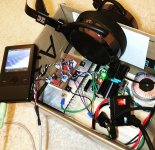Yes, and the falling is more or less linear behavior whereas rising is exponential decay. It is a single-ended circuit so the asymmetry is to be expected I guess (vs a true push-pull).
Testing it around the house with a portable setup. Found out that a 10VA trafo works fine to supply the power (estimated 7w). The PSU is a simple bridge and four 10mF caps in CRC followed by 7815/7915 regulators. This amp works really well with power hungry HE400i’s. Sounds very good and very neutral with excellent detail.
Attachments
40mF in a headphone amp supply?...
The PSU is a simple bridge and four 10mF caps in CRC followed by 7815/7915 regulators.
...
Tsk tsk tsk... You will have thin and tubby bass then. Four 22mF would be better, but still not quite enough!
40mF in a headphone amp supply?
Tsk tsk tsk... You will have thin and tubby bass then. Four 22mF would be better, but still not quite enough!
It’s a pure Class A amp: all the current it needs is flowing continuously and equal to 2x the quiescent bias current or 2x115mA=230mA. In Class AB, dynamic loads need large capacitances but even there, 9600uF x 4 is enough for a 50w amp. In Pure Class A, the capacitor size is strictly for ripple smoothing in the CRC so bass authority has nothing to do with it. Having a larger reservoir cap right at the MOSFET will give better stereo separation and some enhanced bass for very deep excursions, but the 40mF vs 80mF behind the voltage regulators won’t really have an effect on bass authority. Btw, 80mF is what is used on a full size 25w Class A speaker amplifier.
JPS64 and I are working on an integrated DC-DC step up to dual rail PSU followed by TI ultralow noise LDO regulators, and then followed by some more filtering for an integrated stereo amp and PSU solution on one PCB. Will only require 5.5mm barrel jack 8vdc to 24vdc input (of sufficient power capability for the bias being used). Typically 1.5amps at 12v for 125mA bias and +/-15vrails.
Could this be a good preamp as well?
Certainly yes, with the ability to drive ANY impedance (even 8ohms) and low distortion, and what distortion there is when driven hard, is all second harmonic and monotonically descending higher orders 3rd and 4th...
It's also very good as preamp from standpoint of JFETs on input stage, so very low currents flow and pot makes no noises when adjusting volume.
As a DC-coupled amp, it is brutally revealing. Make sure your source has no DC or you might want an AC-coupled 4.7uF filmcap input coupler (toggle switch in/out).
I would imagine this amp driving a 10kohm load is a walk in the park.
As a DC-coupled amp, it is brutally revealing. Make sure your source has no DC or you might want an AC-coupled 4.7uF filmcap input coupler (toggle switch in/out).
This means even for a low dc offset (less than 10mV, around 5mV) it will need a filmcap?
Make sure your source has no DC or you might want an AC-coupled 4.7uF filmcap input coupler (toggle switch in/out).
Would this be on the board?
Would this be on the board?
Not yet but let’s see if JPS64 can add it.
The amp design is moving along. With more bells and whistles. Now with selectable Xfeed and optional input cap coupling. Built in single 12vdc to dual rail with DC step up and TI LDO 4uV regs and CRCRC.
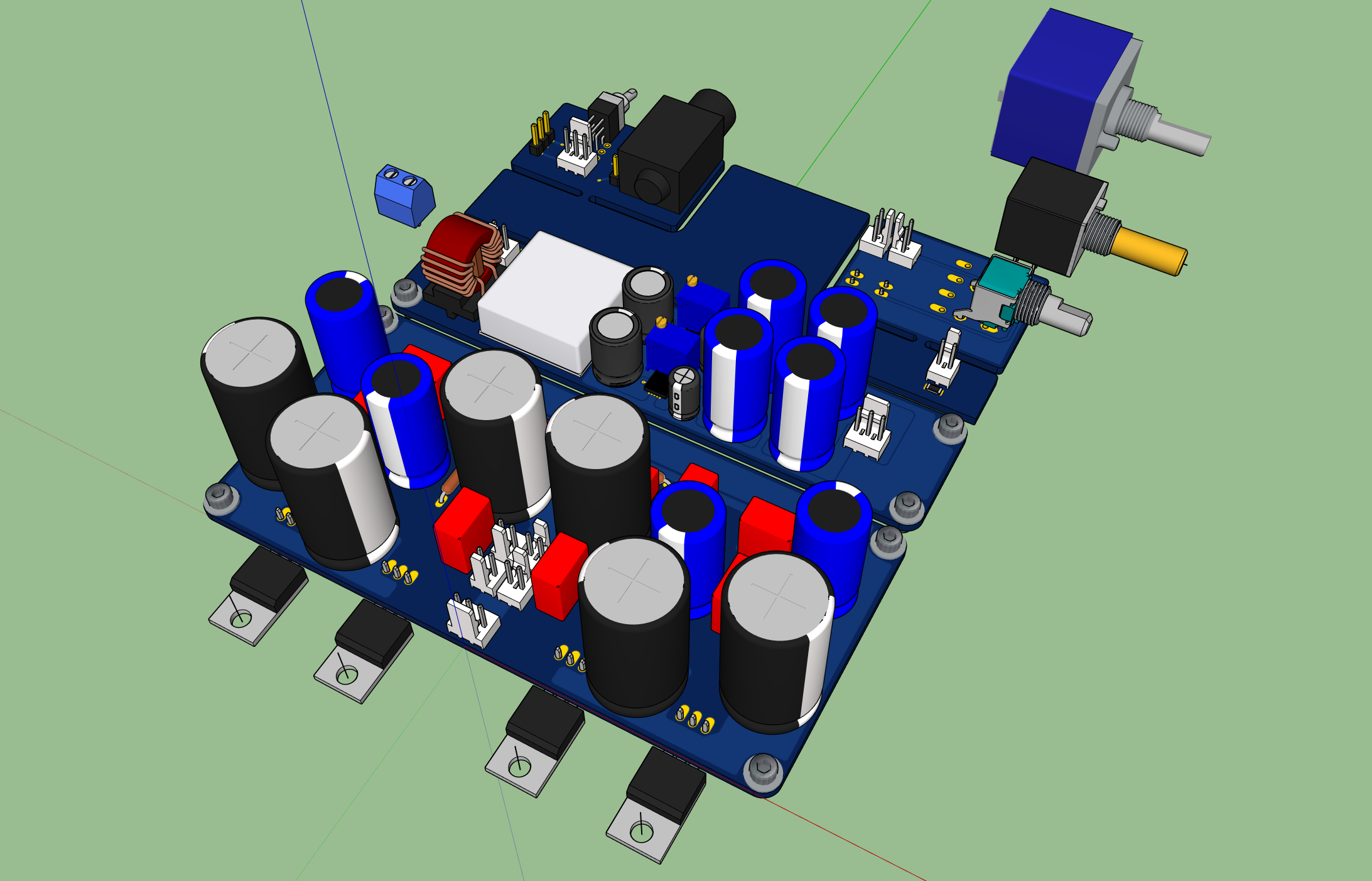
New DC-DC PSU with LDO, cap Mx, and CRCRC tested in hand etched prototype and works well.
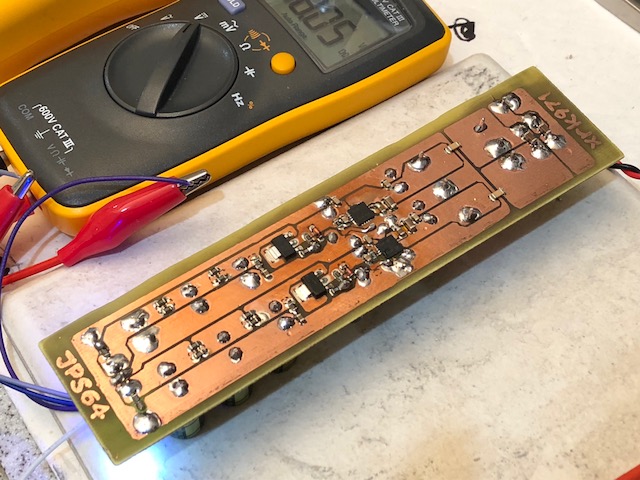
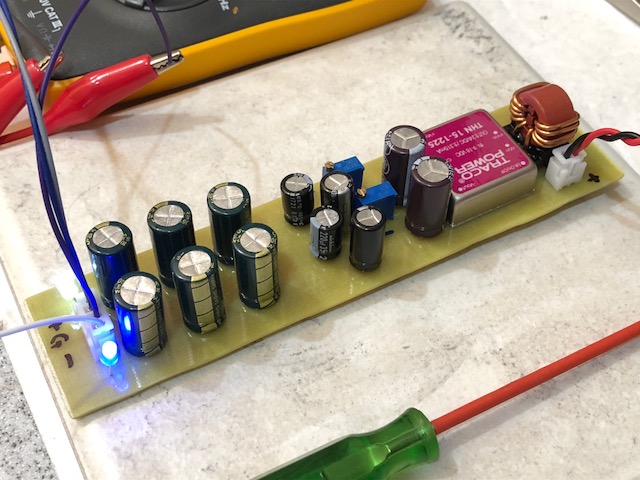
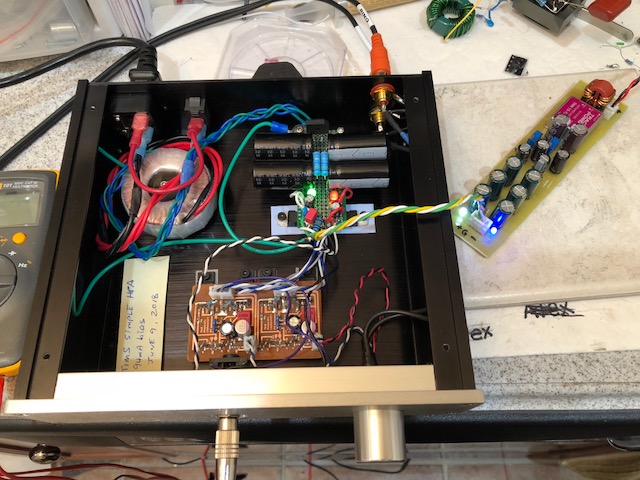
More here:
Simple High Performance DC Coupled Class A HPA with sub PPM THD
More here:
Simple High Performance DC Coupled Class A HPA with sub PPM THD
This one
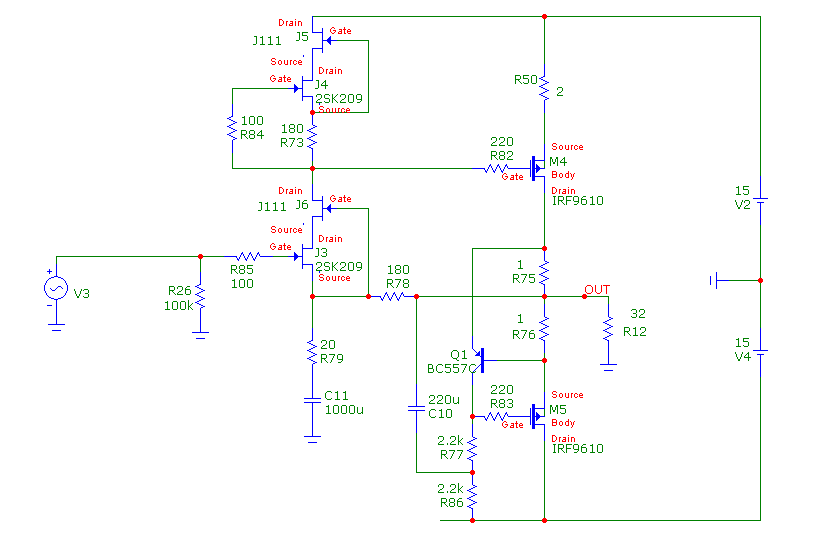
I think here J3 and J4 needs to be matched (read somewhere)..
Do all the 4 jFets needs to be of same type or can we have J3 and J4 as BF862 as it is and use the cascode transistors with some other fFet or BJTs (bc5xx series )?
Yes, J3 and J4 need to be matched and J5 and J6 can be another type of JFET of similar Idss. Changing to BJT will require additional components I think and I have not tested it that way. You are welcome to try and mod it or suggest a BJT. However, the BF862 is so cheap that it doesn’t make any sense to.
Btw, measurements of the DC-DC PSU shows that it really does resemble a battery in low noise performance.
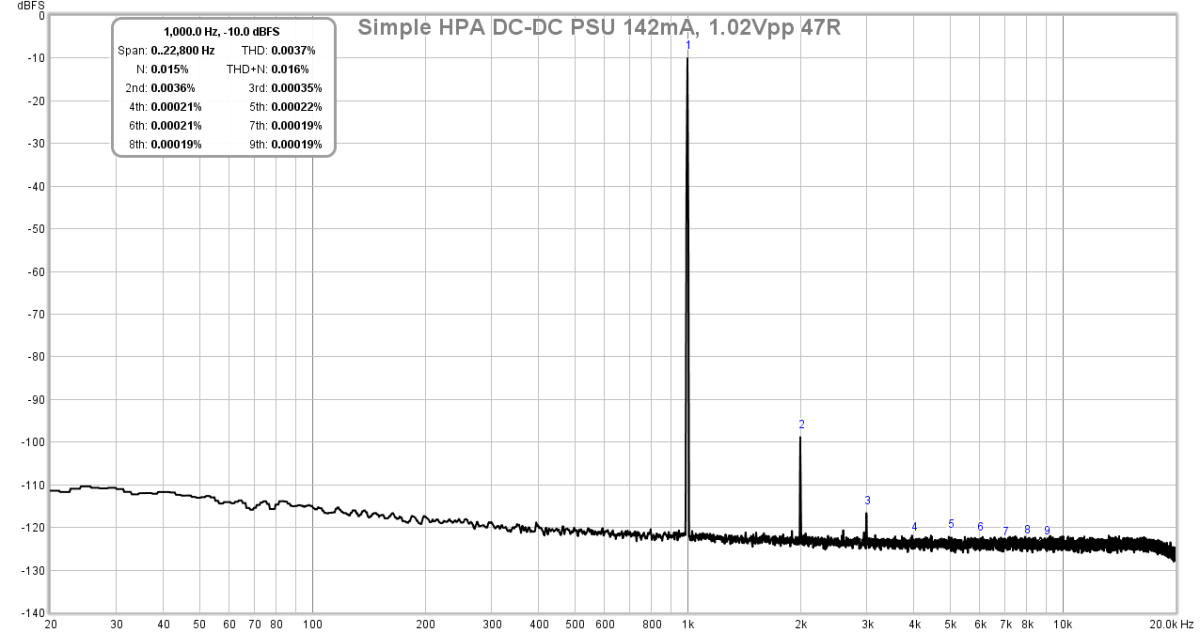
Btw, measurements of the DC-DC PSU shows that it really does resemble a battery in low noise performance.
Last edited:
This means even for a low dc offset (less than 10mV, around 5mV) it will need a filmcap?
With a 10mV offset from the source and 20dB gain, you will have 100mV dc offset at the output. I hibk that’s probably an unacceptable level of offset for most headphones.
- Home
- Amplifiers
- Headphone Systems
- Simple High Performing Headphone Amp
